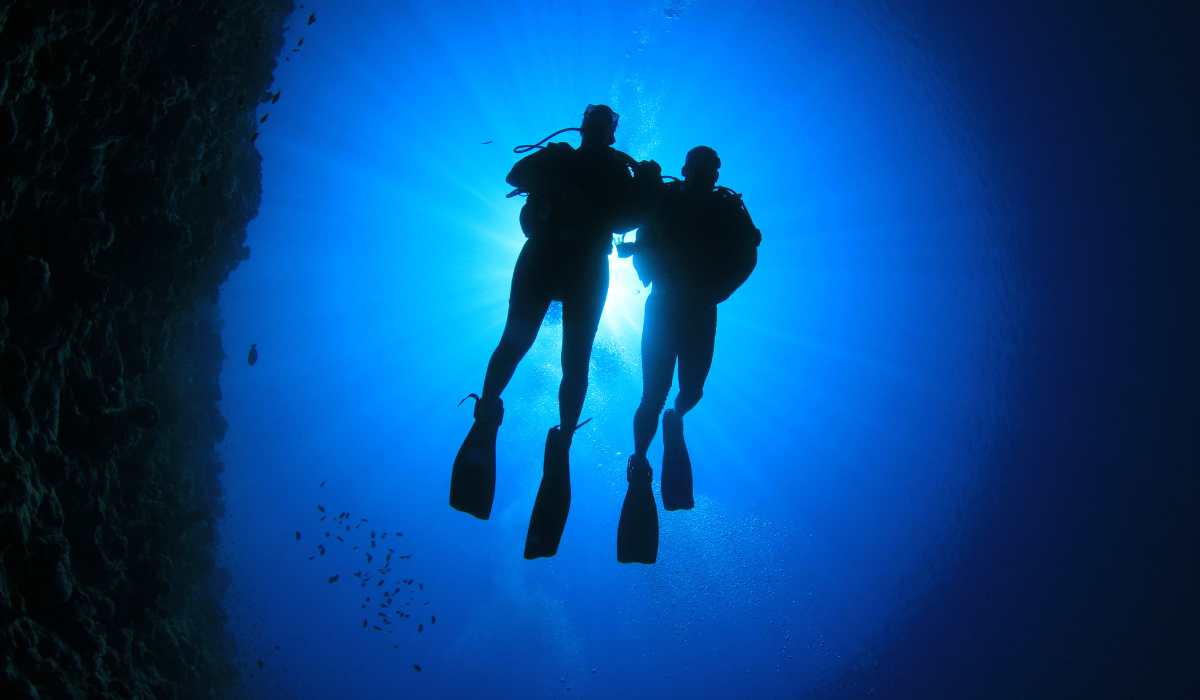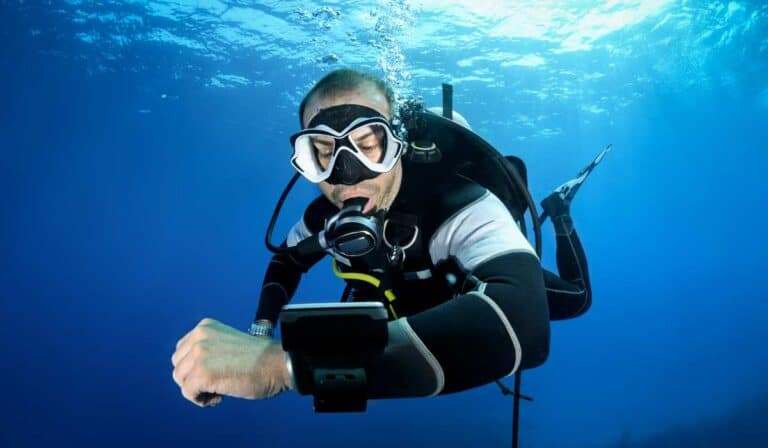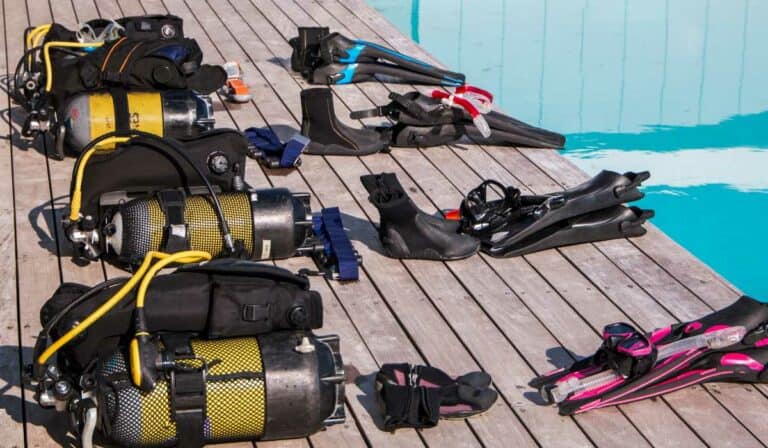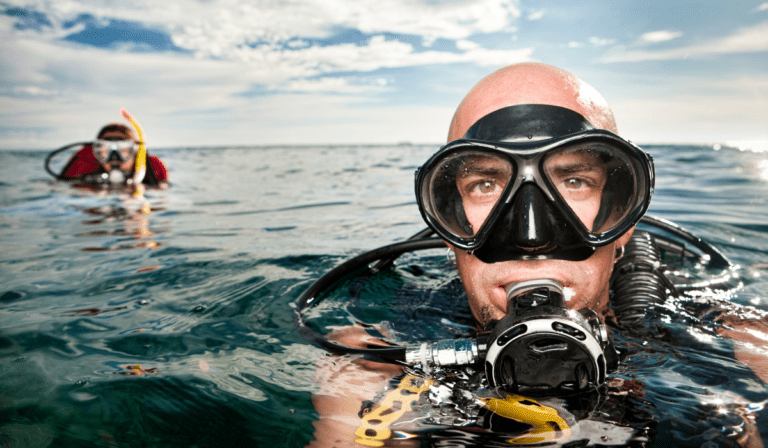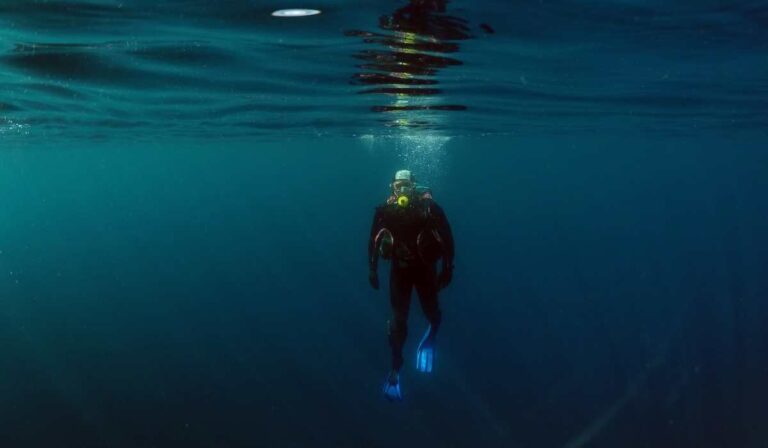5 Best Places for Scuba Diving in Europe
Exploring the various submerged realms of Europe can be an exciting journey, presenting a unique outlook on the continent’s varied aquatic scenery. From ancient shipwrecks to vibrant marine ecosystems, these top diving destinations provide unforgettable experiences for both novice and seasoned divers alike.
In this blog post, we will explore five of the most captivating scuba diving in Europe, including Greece with its rich history and crystal-clear waters. Croatia’s beautiful beaches and abundant marine life make it another great place for enthusiasts looking to dive into the depths of the Adriatic Sea.
We’ll also delve into Malta’s intriguing underwater world filled with historical artifacts and stunning natural formations. Spain boasts warm waters perfect for exploring its numerous dive sites along the Mediterranean coastlines while Italy presents opportunities to uncover hidden gems beneath its azure seas.
Join us as we embark on a journey through some of the finest locations for Scuba Diving in Europe that are sure to leave you breathless and inspired by their beauty.
Table of Contents
1. Scuba Diving in Greece

Discover the captivating depths of the Mediterranean Sea and uncover a realm of brilliant aquatic life when you partake in scuba diving in Greece. Greece’s captivating past, gorgeous seascapes, and abundant aquatic ecosystems make it a beloved diving spot for divers from all over.
The Best Dive Sites in Greece
- Santorini: Known for its iconic white-washed buildings and dramatic cliffs, Santorini also boasts some incredible dive sites. Explore volcanic formations at Nea Kameni or visit Palia Kameni to swim through hot springs.
- Crete: The largest Greek island offers numerous diving opportunities such as exploring ancient shipwrecks like the World War II-era Messerschmitt Bf109 aircraft wreck or discovering unique cave systems at Plakias.
- Zakynthos (Zante): Home to one of Europe’s most famous beaches – Navagio Beach – Zakynthos also features several fascinating dive sites including the enchanting Keri Caves and Marathonisi Island where you can encounter endangered loggerhead turtles.
Tips for Scuba Diving in Greece
- Dive centers are abundant throughout Greece; however, be sure to choose a reputable company with certified instructors who prioritize safety measures.
- Greece has strict regulations on diving near archaeological sites. Always follow local guidelines and respect these protected areas while enjoying your underwater adventures.
- The ideal time to dive in Greece is between May and October when the water temperature is comfortable for underwater exploration.
PADI-certified courses are offered in Greece to assist divers of all levels, from beginners to experienced ones, with honing their skills and discovering the stunning aquatic marvels that this nation has to offer. Don’t miss out on the opportunity to experience some of Europe’s most breathtaking dive sites in Greece.
Diving in Greece is an incredible opportunity to observe the vibrant and varied marine habitats. Moving on from there, Croatia offers its own selection of exciting dive sites that are sure to thrill any diver.
Click here to read about Diving in the Lone Star State: The Best Places to Scuba Dive in Texas
2. Scuba Diving in Croatia
Dive into the enchanting depths of the Adriatic Sea and discover some of Croatia’s most captivating underwater locations. Dive into the depths of Croatia’s Adriatic Sea and discover an aquatic realm teeming with life, awe-inspiring wrecks, and crystalline waters for all levels of divers.
Ancient Shipwrecks
Croatia’s long maritime history means there are plenty of ancient shipwrecks waiting to be explored by adventurous divers. One such site is the Baron Gautsch wreck near Rovinj – a 100-year-old Austro-Hungarian passenger steamship that sank after hitting a mine during World War I. Today, it lies at a depth of around 40 meters (131 feet) and serves as an artificial reef teeming with fish species like groupers, sea breams, and lobsters.
Hidden Coves
The stunning coastline of Croatia boasts numerous hidden coves perfect for Scuba Diving in Europe. The Blue Cave on Bisevo Island is one such gem – accessible only by boat or through an underwater tunnel from another cave system called Monk Seal Cave (Morska vila Ã…¡pilja). Here you’ll find enchanting blue light illuminating the cavern walls due to sunlight refracting through seawater.
Tips for Scuba Diving in Croatia:
- Best time to dive: The ideal months for scuba diving in Croatia are between May and October when water temperatures range from 20°C (68°F) to 25°C (77°F).
- Required certifications: While some dive sites are suitable for beginners, others require advanced certification. Make sure to check the requirements of your chosen dive site beforehand.
- Dive centers: There are numerous reputable dive centers in Croatia offering guided dives and courses. Some popular ones include Blue Planet Diving Center in Dubrovnik, Dive City in Split, and Puffer Fish Diving Center on Hvar Island.
No matter which part of Croatia’s breathtaking coastline you choose to explore, scuba diving here promises an unforgettable experience filled with stunning underwater landscapes and fascinating historical relics. Ready to uncover the secrets that lurk beneath Croatia’s surface?
Exploring the underwater realm of Croatia is an experience like no other, with its shimmering waters and diverse aquatic creatures. Moving on to the next destination for scuba diving enthusiasts, Malta offers a wealth of underwater experiences from reefs to wrecks.
Key Takeaway:
Croatia offers an unparalleled scuba diving experience for divers of all levels, with its captivating underwater scenery and historical relics. With its crystal-clear waters, abundant marine life, captivating shipwrecks, hidden coves, and enchanting blue light illuminating the cavern walls due to sunlight refracting through seawater – it promises an adventure filled with stunning underwater landscapes and fascinating historical relics. The ideal time for exploring Croatia’s underwater realms is between May and October when temperatures range from 20°C (68°F) to 25°C (77°F).
3. Scuba Diving in Malta
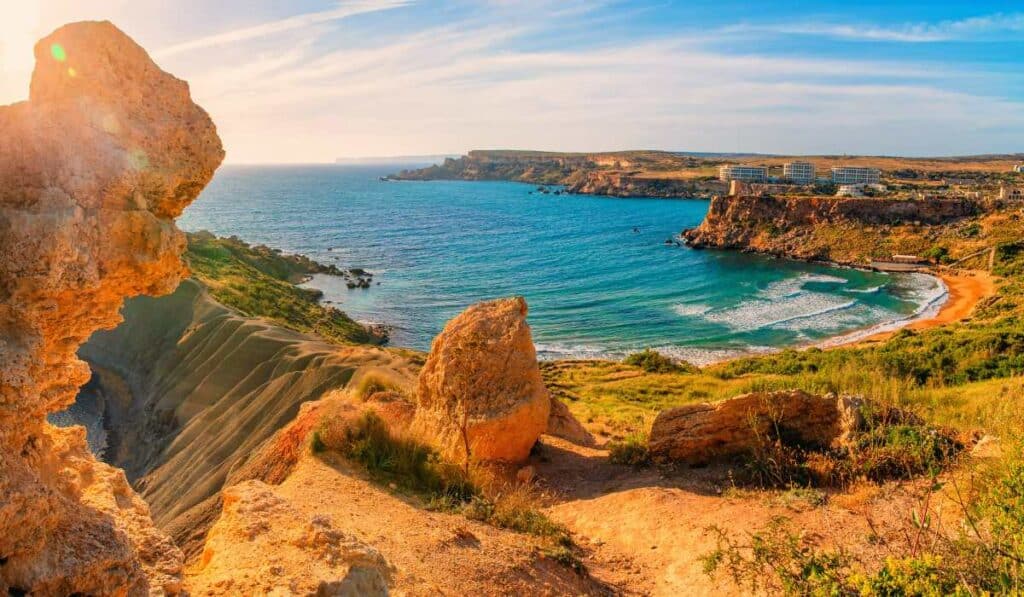
Dive into the depths of the Mediterranean and uncover a wealth of history and culture as you explore some of the best scuba diving spots in Europe. Malta, an archipelago located between Sicily and North Africa, boasts crystal-clear waters, fascinating underwater landscapes, and historical shipwrecks that make it a top destination for scuba divers.
Click here to read about Discover the 5 Best Beach Cities for Scuba Diving
A Rich Maritime History
Malta’s strategic location has made it a significant maritime hub throughout history. As such, its surrounding waters are home to numerous shipwrecks, including military vessels from World War II and ancient merchant ships dating back centuries. These dive sites offer scuba divers unique opportunities to explore underwater time capsules teeming with marine life.
The Blue Hole & Azure Window
One must-visit dive site is the famous Blue Hole, located near Dwejra Bay on Gozo Island. This natural wonder features an impressive limestone formation leading to an underwater cave system filled with colorful corals and diverse marine species. The nearby Azure Window was once another popular attraction before collapsing in 2017; however, its remains now provide new opportunities for exploration beneath the waves.
Tips for Scuba Diving in Malta:
- Best Time to Dive: April through October offers warmer waters (ranging from 18°C – 25°C) ideal for scuba diving.
- Certification Level: There are dive sites suitable for all levels of scuba divers, from beginners to advanced. Make sure to choose a site that matches your experience and certification level.
- Cost: Expect to pay around a‚¬30 – a‚¬50 per dive, depending on the location and whether you need equipment rental or not.
With its captivating underwater landscapes, historical shipwrecks, and abundant marine life, Malta is undoubtedly one of the great places in Europe for scuba diving enthusiasts. So pack your scuba gear and get ready for an unforgettable adventure beneath the Mediterranean waves.
Malta’s crystal-clear waters and an array of marine life make it an ideal spot for scuba divers seeking stunning underwater views and thrilling adventures. For those looking to explore even further, Spain is a great choice with its abundance of dive sites and diverse marine life.
Key Takeaway:
Malta is a premier spot for scuba divers, with its pristine waters, sunken vessels and various aquatic species. The Blue Hole and Azure Window are must-visit dive sites that offer unique opportunities for exploration. Scuba diving in Malta is suitable for all levels of experience and certification level, with warmer waters from April through October ideal for diving.
4. Scuba Diving in Spain
Experience some of Europe’s most beautiful dive sites, from deep sea caves to coral reefs, as you embark on an unforgettable underwater adventure in Spain. Spain offers a variety of diving sites along its lengthy shoreline and nearby islands, rendering it an ideal location for both novices and experienced divers.
Costa Brava: A Haven for Marine Life
The stunning Costa Brava, located in northeastern Spain along the Mediterranean coast, is home to numerous marine reserves teeming with vibrant aquatic life. One popular site is the Medes Islands Marine Reserve, where divers can encounter groupers, barracudas, moray eels, and even sunfish amidst rocky formations covered with colorful corals.
Canary Islands: Year-Round Diving Destination
With warm waters all year round and exceptional visibility reaching up to 30 meters (100 feet), the Canary Islands are ideal for scuba diving enthusiasts who want to explore volcanic seascapes filled with unique species like angel sharks or stingrays. Some must-visit dive sites include El Cabron Marine Reserve in Gran Canaria and Tenerife’s famous underwater volcanic caverns.
Balearic Islands: Shipwrecks & Caves Galore
The Balearic Islands, including Mallorca and Ibiza, possess a beguiling amalgamation of shipwrecks and caves lurking beneath the azure waters. For instance, the Don Pedro wreck near Ibiza is a popular site for advanced divers, while the Cova de la Madonna in Mallorca offers a thrilling cave diving experience with its intricate labyrinth of tunnels.
Cabo de Palos: Spain’s Best-Kept Secret
Located on the southeastern coast of Spain, Cabo de Palos has considered one of Europe’s top scuba diving destinations thanks to its rich marine biodiversity and numerous shipwrecks from various historical periods. The area also boasts impressive underwater cliffs that provide shelter for diverse species like octopuses, nudibranchs, and seahorses.
Click here to read about 7 Best Places for Scuba Diving in the USA
Tips & Costs:
- Scuba diving certification courses are widely available throughout Spain at reasonable prices (starting around €300).
- The average cost for guided dives ranges between €40-€60 per dive depending on location and equipment rental fees.
- Ensure you have appropriate insurance coverage before embarking on any scuba diving activities.
- The best time to dive in mainland Spain is during the summer months (June-September), while the Canary Islands offer great conditions year-round due to their subtropical climate.
In summary, whether you’re exploring the fascinating wrecks off the Balearic Islands or swimming alongside majestic marine creatures in Costa Brava or the Canary Islands – there’s no shortage of unforgettable experiences awaiting you beneath the waves when scuba diving in Spain.
Scuba diving in Spain is an incredible experience, offering crystal clear waters and a variety of marine life. Italy offers some of the most breathtaking dive sites in Europe with its many coves and bays providing divers with spectacular views from beneath the surface.
Key Takeaway:
Spain’s coastline and its neighboring isles provide a variety of scuba diving opportunities, like the Costa Brava, Canary Islands, Balearic Islands, and Cabo de Palos. With warm waters year-round and exceptional visibility reaching up to 30 meters (100 feet), Spain is an ideal destination for both beginners and experienced divers alike.
5. Scuba Diving in Italy

Dive into the captivating subaquatic realm of Italy, where you can traverse the breathtaking seascapes of the Tyrrhenian and unearth a one-of-a-kind aquatic biosphere. Experience the wonders of Italy’s underwater realm, with its varied dive spots and vibrant marine life – a journey not to be overlooked.
The Island of Elba
The Island of Elba, located off the coast of Tuscany, offers fantastic dive sites for both beginners and experienced divers alike. Home to vibrant coral reefs teeming with fish species such as groupers and barracudas, this island also boasts fascinating shipwrecks waiting to be explored.
Ustica Island
Located northwest of Sicily, Ustica Island is another must-visit destination for scuba enthusiasts visiting Italy. Known as “The Black Pearl,” this volcanic island features crystal-clear waters filled with colorful sponges and gorgonian fans that attract various species like moray eels and octopuses.
Click here to read about 12 Best Places for Scuba Diving in Florida
Tips for Scuba Diving in Italy:
- Best time to visit: The ideal period for scuba diving in Italy is from May through October when water temperatures range between 18°C (64°F) – 26°C (79°F).
- Dive certification: While many Italian dive centers offer beginner courses without any prior experience required, it’s always best to have at least your Open Water Diver certification to enjoy a wider range of dive sites.
- Marine life: Keep an eye out for unique species like the Mediterranean slipper lobster, seahorses, and even dolphins while diving in Italy’s waters.
Whether you’re a seasoned diver or just starting your underwater adventures, scuba diving in Italy offers unforgettable experiences that will leave you wanting more. Gather your scuba equipment and prepare to traverse the depths of the Tyrrhenian Sea.
FAQs about the Best Places to Scuba Dive in Europe
Where is the Best Place to Dive in Europe?
The best place to scuba dive in Europe depends on your preferences and experience level. Some of the top scuba diving spots include Greece, Croatia, Malta, Spain, and Italy. Each location offers unique underwater landscapes and marine life.
IS THERE ANY GOOD SCUBA DIVING IN EUROPE?
Yes, there are many excellent scuba dive sites across Europe. The Mediterranean Sea provides diverse marine ecosystems with crystal-clear waters perfect for exploring shipwrecks, caves, and vibrant coral reefs. PADI lists numerous European dive sites suitable for all skill levels.
WHICH COUNTRY HAS THE BEST SCUBA DIVING?
In terms of variety and quality of dives within a single country’s borders, Malta ranks high due to its clear waters, numerous wrecks, cave systems, and abundant marine life. However, other countries like Greece or Spain also offer fantastic scuba diving experiences depending on individual interests.
Is Scuba Diving Good in the Mediterranean?
Absolutely. Scuba diving in the Mediterranean is an incredible experience thanks to its warm waters, unique dive sites, rich history underwater including ancient shipwrecks, and diverse marine species such as groupers or octopuses making it ideal for divers at every level.
Conclusion
In summary, Europe has some of the most remarkable spots for scuba diving on the planet. Greece offers crystal clear waters and ancient ruins to explore, while Croatia boasts vibrant marine life and underwater caves. Malta is home to unique shipwrecks and Spain’s Costa Brava provides a stunning coastline for divers. Italy offers diverse dive sites including colorful reefs and WWII wrecks.

